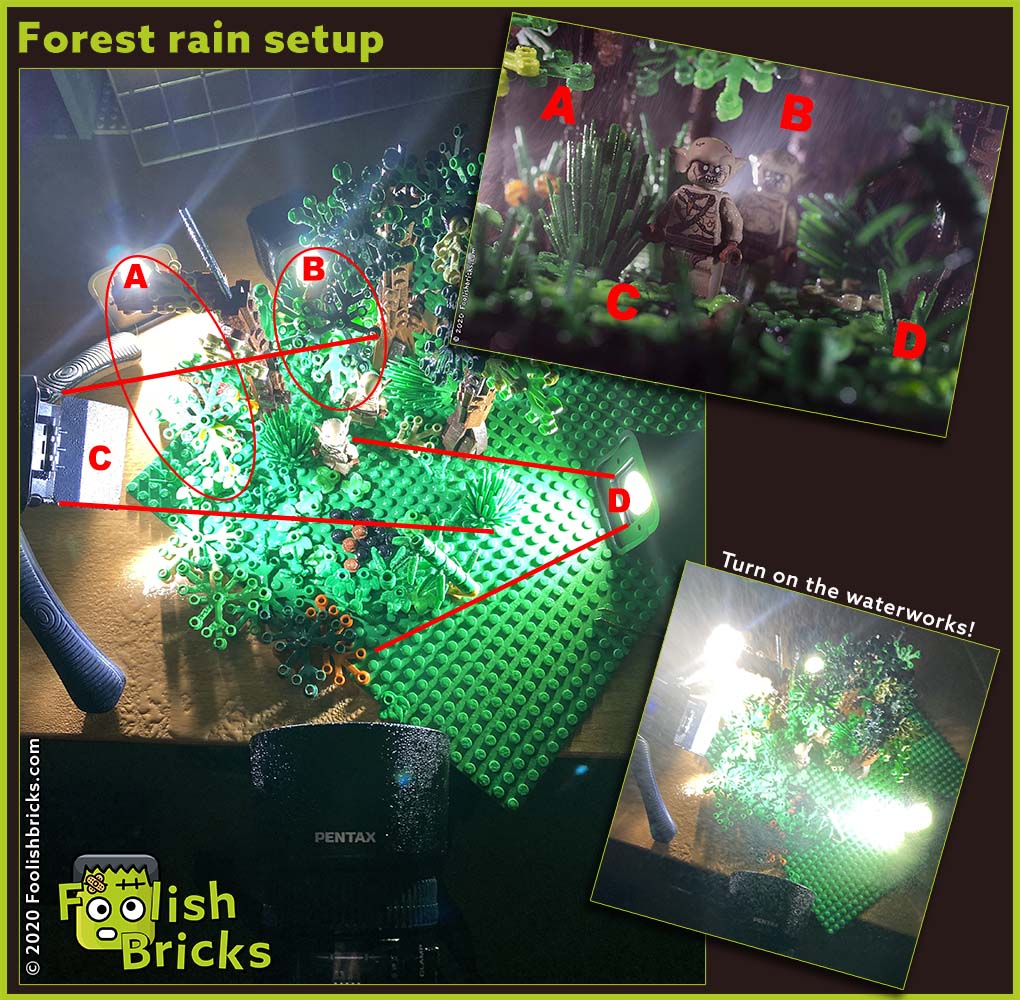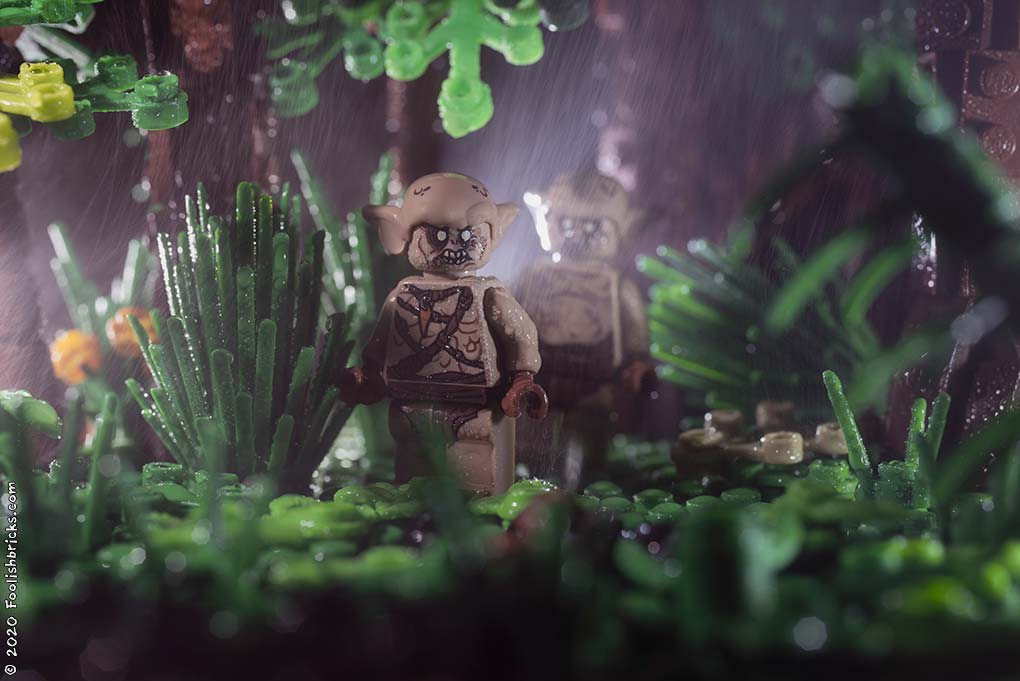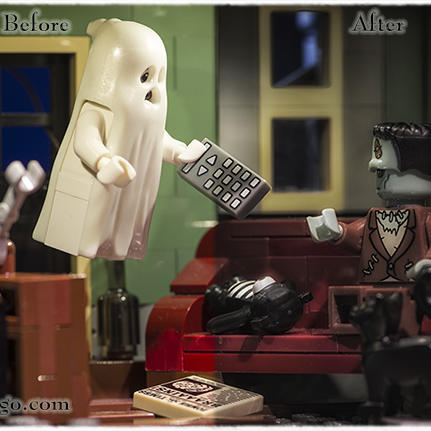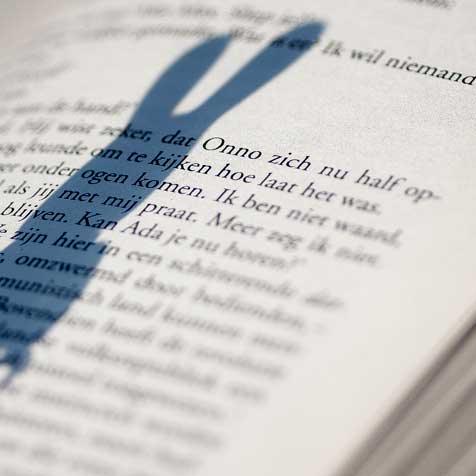Tutorial on making it rain in a Lego photo
Up until now I just could not figure out how to get rain in my images. I simply shopped it in…. it’s ok, but I always wanted the real thing! Then I read a comment written bij Anna (Fourbrickstall)- also remember to visit her VERY informative Youtube-channel if you want to know about Lighting and Lego-photography!) wherein she wrote something like that you simply need to keep your eyes open. When do you see rain on a wet evening; You see it in front of a lamppost! When there is no light… you can’t see light. So there you go; step one to get rain into your Lego-photo, you need to backlight the waterdrops!
Make it rain in a Lego photo
And that is what I did. I created a scene with the two monsters, backlit the scene (light B in figure 1), grabbed my water spray bottle and started spraying.

Nice! I saw some rain and light in the B-area of the photo…. but the rest was dark. I barely saw the monster in the back. To light the front of the scene, I added the C and D lights at the sides. That lit the C, D-areas and the monsters sufficiently. However, now it irritated me I only saw rain in the B-area. I also wanted rain in the A-area. That area was well lit by C, but from the side and not from the back. And back-light B was blocked by some trees. That’s why I finally added back-light A and voila…. rain in area A! Yay 😀
Light and camera settings
Another thing I completely ignored before were specific camera-settings. I have to admit; I feel a little stupid now because of this. Usually I don’t care about shutter speed in my Lego photography because my scenes mostly don’t have moving parts. However… rain is a moving element in these photos (DUH!). So shutter speed IS important and the shutter speed determines if you’ll see drops, strips or just a mist. With long shutter speeds I normally use I only saw a grey mist, and that was it. I needed to increase the shutter speed! That also meant I needed to have more light than usual to prevent the image from becoming way too dark. In the end my camera-settings were: 50mm macro lens, ISO400 f1/7,1 1/40s.
Flash-light
I always used continuous light, so I can’t say too much about flash lights. However, I will experiment with flash shortly. Remember that flashlight is usually more bright that continuous light AND it can freeze motion/ rain. Both these qualities influence the shutter speed and thus the exposure-triangle. Anyway, I’ll get back to you once I know a bit more!
The result
The resulting image “a rainy forest walk” is shown below. Thanks for reading and until next time!

OTHER POSTS THAT MIGHT INTEREST YOU;
Heavenly forest
February 8, 2019
Photo enhancement
September 2, 2016
The premise of your story
June 14, 2018
You can subscribe to the newsletter to receive occasional updates from Foolish Bricks.


